Part I
Lithuania Under Russian Rule
During the 17th century continual disputes between the Lithuanian and Polish nobility over rule within Lithuania weakened the foundations of the state. The end result was the partition of the state between Russia, Prussia and Austria, with the major part of Lithuania going to Russia, while a smaller portion, Lithuania Minor, was handed over to Prussia.
At this time Lithuania was still primarily an agricultural country. The little industry that existed was connected with agriculture[1] and was not usually controlled by Lithuanians.[2] The amount of manufacturing was, nevertheless, increasing and helped somewhat to relieve the overcrowded rural areas.[3]
The conditions of the Lithuanian peasants, under Polish rule, were better than those of the serfs who came directly under Russian jurisdiction. During this period, serfdom ceased to exist in Poland, and since the peasants gained their personal rights, they theoretically became equal to the nobillty. However, freedom was granted without land and it was necessary for the peasants to rent or buy land from the landowning nobility.[4]
In Vilnius and Kaunas, the provinces controlled by the Russian government, the position of the serf, which was not good to start with, steadily worsened as he became burdened with additional obligations, such as twenty-five years of military service and increased taxation. The peasants of this area, prior to their incorporation into Russia, had had a certain amount of protection through what was called the “inventory.” This meant that at set times, which usually coincided with the selling, leasing, or mortgaging of an estate, the lord was required to define the size of his peasants’ holdings and thereby determine the fixed amount of dues owed by them. The peasants were to participate in this process and each was obliged to work a set number of days according to the size of his holding.[5] In 1840, with the extension of a newly codified law into this area, the Russian government did away with the inventory and established the complete legal dominance of the lord.
Numerous uprisings by Lithuanian peasants prompted the Czarist government to adopt a policy of severe Russification. From 1864 to 1905 a series of decrees were issued, aimed at the replacement of Polish landlords by Russians. One of the most important, that of December 10, 1865, prohibited non-Russians from buying land, giving it away, exchanging it, or renting it for a long period of time. The only right which remained was that of inheritance.[6] In addition, there was economic discrimination, as in taxation, which fell heavily on all classes of non-Russians in the western provinces.[7]
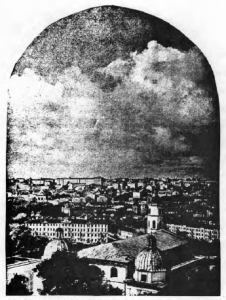
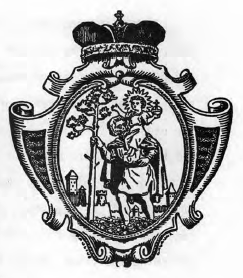
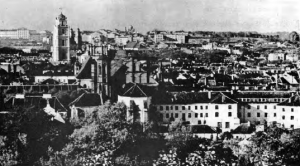
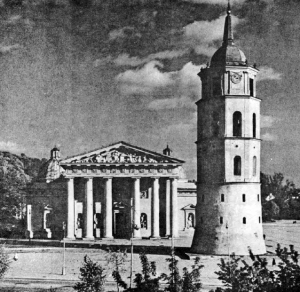
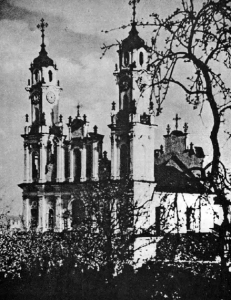
During the Russian Duma period, which lasted from 1907 to 1917, the agrarian question was to prove volatile. Even though servitude was abolished, Lithuanian peasants encountered all possible restrictions from buying land, while non-Lithuanian settlers were given exceedingly good options, or at times paid little or nothing at all for the land.
Such discriminatory policies forced landless Lithuanian families to emigrate to America. The Czarist Peasant Land Bank, although responsible for supplying loans to Lithuanian peasants, almost always acted as an agent for Russian colonization, causing a large and discomforting increase in Lithuania of Orthodox Eastern Slavs (Byelorussians, Russians and Ukrainians). From 1861 to 1897 alone their number in the seven districts of Vilnius was reported to have increased from 184,688 to 971,245[8] while the number of Lithuanians decreased from 418,880 to 279,694.[9]
During the latter part of the nineteenth century the Lithuanians were also to suffer from suppression in the literary field. In the first half of the century a continuous, ever-strengthening growth of literary as well as national consciousness had been in evidence. This is exemplified by the appearance of several poets who, in all likelihood, had been affected by the work of the Reverend Francis Bohusz titled “O Początkach Narodu, i Języka Litewskiego” (The Beginnings of the Lithuanian Nation and its Language), which appeared in 1808.
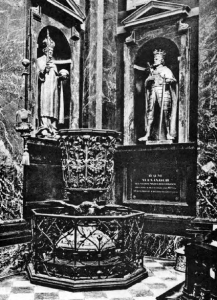
Two men, however, stood above the rest. These were Simanas Daûkantas and Bishop Moteijus Valančius. The former was born in Telšiai in 1793 and completed his studies at the University of Vilnius. He was one of the first to suggest that Lithuania be separated from Poland, and in his historical works he praised the past of Lithuania along with its customs and people. Valančius (1801-1875), who was born near Salantai, became very active in the writing and publishing of Lithuanian material, especially after the Russian government banned the use of the Latin alphabet in 1864.[10]
This ban on the Lithuanian free press began a unique forty year period in Lithuanian history. Referred to as the era of the knygnešys (book carriers), it witnessed the publishing, mainly in East Prussia and the United States, of Lithuanian books and periodicals which were then smuggled into Lithuania. Valančius was instrumental in the organization of this work and was helped by many, including the “patriarch of the book smugglers,” Juris Bieliakas Bielinis, who later founded his own organization. Ironically, Bielinis died January 18, 1918, only a month before Lithuania was declared independent.[11] The success of these individuals was impressive, as indicated by the number of volumes confiscated — 173,258 between 1891 and 1902.[12]
Nevertheless, the risks involved were great, for the book carrier had to cross three lines of Russian security guards. If the individual was caught, the smuggler was either imprisoned locally for one to five years, or deported to Siberia for a three to five year period.[13]
Paralleling this smuggling of books was the illegal teaching of Lithuanian children to read and write their own language. Children were instructed at home, singly or in small groups, while a constant watch for Russian officials was kept. The census of 1897 reveals the success of this clandestine affair: Out of a total population of 1,019,794 Lithuanians in the Kaunas Province, 354,420, or over one third, were literate in the Lithuanian language.[14] The fact that over fifty percent were between the ages of ten and thirty indicates an even higher rate of success for the secret schools.[15] Of those immigrating to the United States, sixty-four percent were able to read and write.[16] This, of course, negates one of the commonly held ideas that these immigrants were ignorant and illiterate.
A final problem to be mentioned was the threat of conscription into the Russian army, which often meant separation from family and country. Although reduced to a shorter; period later, the length of service was 25 years. Therefore, when a young man was about to be drafted, frequently he would secretly cross over the East Prussian border and, from there, often reach America.
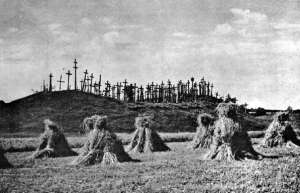
- Albinas Rimka, Lietuvos Ūkis Prieš Didijį Karą (Lithuanian Farming Prior to the Great War) (Vilnius, 1918), p. 58. Approximately 90 to 95 percent of the total industry was either directly or indirectly connected with agriculture. In value, agricultural industry made up about 99 percent of the total industrial output. ↵
- R. Maliukevičius (ed.), Vincas Kapsukas Raštai (Vilnius, 1962), V, pp. 80, 81. and E. Griškūnaitė, Darbininkų Judějimas Lietuvoje 1895-1914 m. (The Workers Movement in Lithuania from 1895 to 1914) (Vilnius, 1971), p. 33. In 1913 in Vilnius the main manufacturing city, the Poles owned 52.18 percent of the industrial establishments, the Jewish population 29.41 percent, the Russians 14.28 percent, and the Lithuanians only 1.05 percent. In Kaunas, the Lithuanians controlled only 10.90 percent. ↵
- E. Griškūnaitė, op. cit., p. 28. From 1884 to 1914 the number of industrial workers increased almost tenfold in the city of Vilnius -- from 783 to 7,344. In Kaunas during the same period the increase was from 1,154 to 4,333. ↵
- Statistinės Zinios Apie Lietuvą Ligi Karui 1914 m. (Statistical Information About Lithuania up to the War of 1914) (Kaunas, 1919), p. 80. Arguments have been put forth stating that since the peasants were free in Suwalki much earlier than in the rest of Lithuania, they were able to develop a solid corps of free farmers, and for this reason 19th century Lithuanian nationalism first appeared in this area. This premise appears correct when it is seen that 57.3 percent of the land belonged to small farmers in Suwalki in 1905, as compared to only 50.3 percent in Kaunas and 46 percent in Vilnius. The percentage of land in large estates was 16.3, 40.6, and 39.2 percent respectively. ↵
- M.V. Nechkina (ed.), Russia in the 19th Century (Ann Arbor, 1953), II, Part I, pp. 276-278. ↵
- L. Bičkauskas-Gentvila, "Lietuvos ir Vakarų Baltrusijos Žemėvaldos Telšių Apribojimai Poreforminių Laikotarpių (1861-1905 m.)" ("Restrictions on Land-ownership in Lithuania and Western Byelorussia Prior to the Reform Period, 1861-1905") Lietuvos TSR Aukštųjų Mok'slo Darbai Istorija (Vilnius, 1969), X, p. 126. ↵
- Ibid., p. 126 . ↵
- Kazys Pakštas, "Earliest Statistics of Nationalities and Religions in the Territories of Old Lithuania, 1861" Commentationes Balticae, IV/V, (1958), p. 204. Piervaia Vsieobshchaia Pieriepis' Nasielieniia Rossiiskoi Impierii, 1879g. (First General Census of the Inhabitants of Imperial Russia, 1879), III, Vilienskaia Gubierniia (Vilnius Province) (St. Petersburg, 1904), p. 59 . ↵
- Ibid., p. 204 and p. 59 respectively. ↵
- Further information on Valancius can be found in Encyclopedia Lituanica, op. cit., XXXII, pp. 531-532. ↵
- St. Butkus, "Knygnešių Patriarchas Jurgis Bieliakas Bielinis Baltasis Erelis" ("The Book Carrier Patriarch-Jurgis Bieliakas Bielinis, The White Eagle"), Knygnešys 1864-1904 (The Book Carrier, 1864-1904) (Kaunas, 1916), pp. 38-57. and Encyclopedia Lituanica, op. cit., II, pp. 495, 496. ↵
- Petras Ruseckas, "Spaudos Draudimo Gadynė" ("The Era of the Press Ban"), Knygnešys 1864-1904 (The Book Carrier, 1864-1904) (Kaunas, 1916), p. 12. ↵
- Encyclopedia Lituanica, op. cit., VI, p. 148. ↵
- Piervaia Vsieobshchaia Pieriepis' Nasielieniia Rossiiskoi Impierii, 1879g., op. cit., XVII, p. 111. The actual figures were divided into those literate in the Russian language and those literate in an "other" language. This leaves the possibility that a percentage would be other than Lithuanian. However, this would be insignificant, since these individuals listed themselves as Lithuanians. Besides this the Lithuanian language and nationalism had taken a firm hold by this time. ↵
- Ibid., XVII, pp. 108-109. ↵
- Victor R. Greene, The Slavic Community on Strike (Notre Dame Press, Indiana, 1968), p. 17. ↵
